The world of leafhoppers is so wide that every time I get ready to investigate a little about them to write here I end up stunned, by the large number of different species that exist, and when I think I have found the name of the one I've seen and I get ready to look for more information, It turns out that it is not the same but a similar one, hahaha a complete madness, which only leaves me to say that those who are dedicated to the exclusive study of this species have a ton of patience hahaha, plus they must really love what they do. This week has been very rainy, which generates that in the afternoons that it stops raining, we see some of these miniatures hanging around the garden.

His favorite plants are, mint, witch oregano, and lemon balm, are the three plants where I have generally observed them, although this small one of the species Macugonalia cavifrons, I have seen it in one of the plants of Kalanchoe pinnata, and is that they are so tiny that even with a macro lens they still look small, but of all the images I have captured of them I think these have been the most detailed.
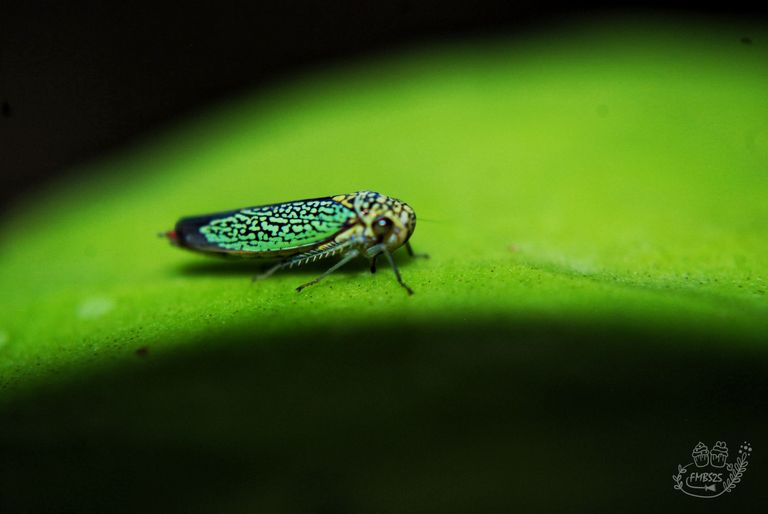
Their huge eyes for their body size are a characteristic of leafhoppers, as are their legs very similar to the front legs of crickets.
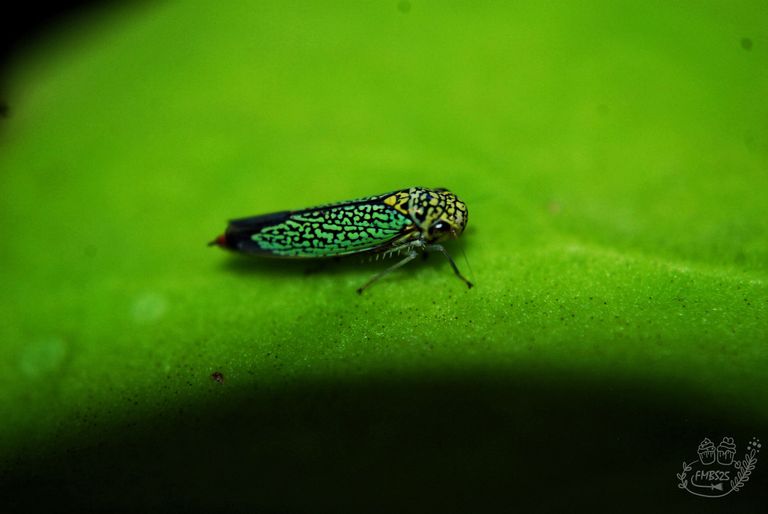
This particular species has a rather striking color combination, for a moment I thought I had seen it before, however, reviewing old photographs I realized that the one I saw some time ago had a slight violet coloration combined with the green of its wings that made it even more striking.
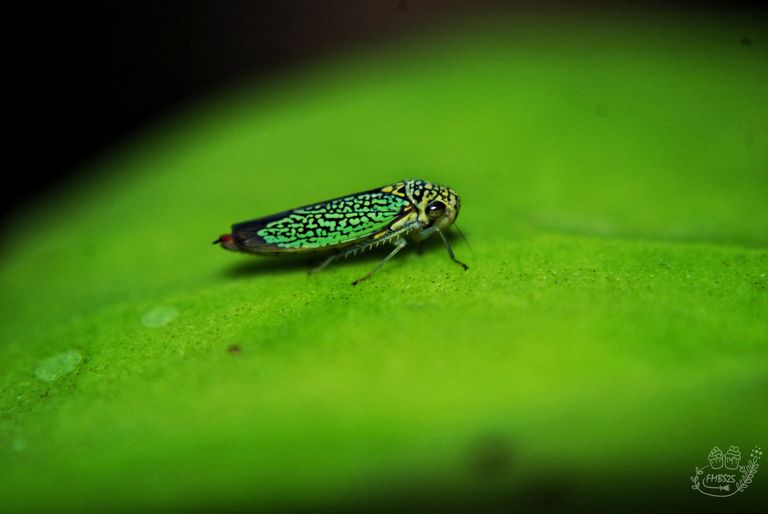
In the lemon balm plant, I have already met several times this small leafhopper that apparently belongs to the tribe Protalebrella brasiliensis, also known as Brazilian leafhopper, and I say apparently because in my extensive search I have not found one that is identical to this small one that, to tell the truth, is a little bigger than the first one I told you about in this post.
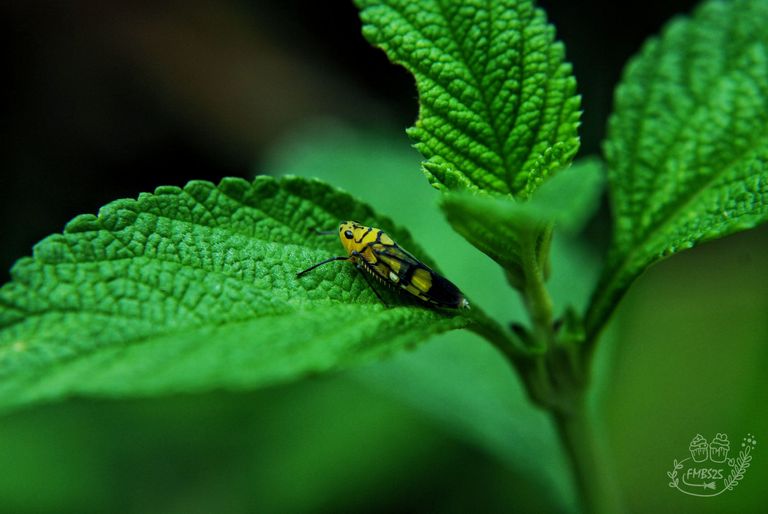
This small yellow and black that from a distance looks more like a yellow jacket spotter for its color combination, has already several days in my lemon balm plant and I say that it is the same, because this is the second time I see this species in my garden, and the first was already a few months ago.
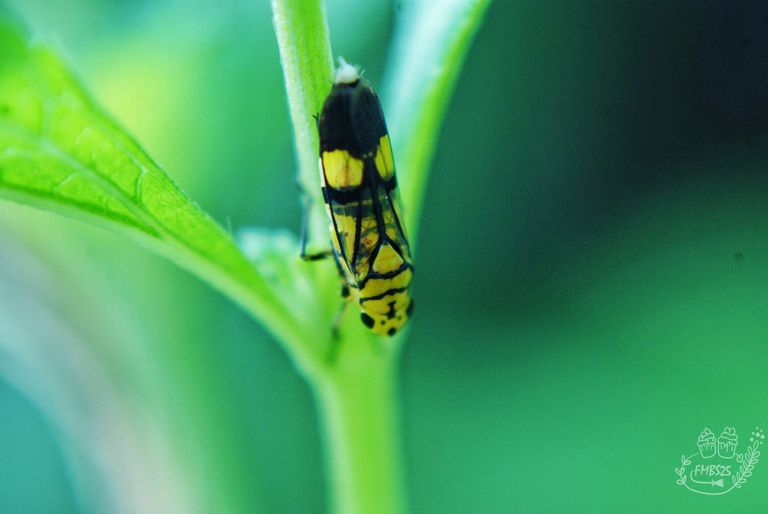
I have seen other species of these little leafhoppers in my garden, but when looking for the camera to photograph them they have already left the place so you can imagine how difficult it is to find again these tiny ones of only about 5 millimeters in a large space. These ones that I have shown you today, as far as I could find information, are not invasive species nor do they pose any danger to our plants, which is a good thing for my garden.
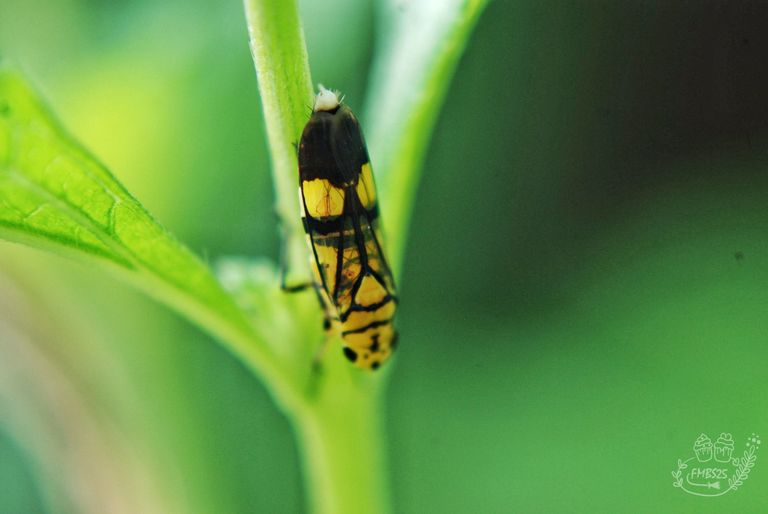

Images of my own, taken with my Nikon D80 camera and Edited with Snapseed and PicsArt.
Thank you for taking the time to read this post, if you have any questions, criticisms, or suggestions, I would appreciate it if you put them in the comment box, and remember, You too can make magic in the kitchen and wherever you go!


Sus plantas favoritas son, la menta, el orégano brujo y el toronjil, son las tres plantas en donde generalmente las he observado, aunque esta pequeña de la especie Macugonalia cavifrons, la he visto en una de las plantas de Kalanchoe pinnata, y es que son tan diminutas que aun con una lente macro siguen viéndose pequeñas, pero de todas las imágenes que he capturado de ellas creo que estas han sido las más detalladas.

Sus ojos inmensos para el tamaño de su cuerpo son una característica de las chicharritas, al igual que sus patas muy similares a las patas delanteras de los grillos.

Esta especie en particular tiene una combinación de colores bastante llamativa, por un momento pensé que ya la había visto anteriormente, sin embargo, revisando viejas fotografías me di cuenta que aquella que vi hace algún tiempo tenía una ligera coloración violeta combinado con el verde de sus alas que la hacía aún más llamativa.

En la planta de toronjil me he encontrado ya en varias oportunidades a esta pequeña chicharrita que al parecer es de la tribu Protalebrella brasiliensis, también conocida como chicharrita brasilera, y digo al parecer, porque en mi extensa búsqueda no he encontrado una que sea idéntica a esta pequeña que a decir verdad es un poco más grande que la primera de las que les hable en este post.

Esta pequeña amarilla y negro que a lo lejos pareciera más una avista chaqueta amarilla por su combinación de colores, tiene ya varios días en mi planta de toronjil y digo que es la misma, pues de esta misma especie es la segunda vez que logro ver en mi jardín, y la primera fue ya hace algunos meses.

He visto otras especies de estas pequeñas chicharritas en mi jardín, pero al buscar la cámara para fotografiarlas ya se han ido del lugar así que imaginaran lo difícil que es volver a encontrar a estas diminutas de apenas unos 5 milímetros en un espacio grande. Estas que les he mostrado hoy, hasta donde pude encontrar información, no son especies invasivas ni que representen peligro para nuestras plantas, lo cual es algo positivo para mi jardín.


Imágenes de mi propiedad, tomadas con mi cámara Nikon D80 y Editadas con Snapseed y PicsArt.
Gracias por tomarse el tiempo de leer esta publicación, si tiene alguna pregunta, crítica o sugerencia, la agradecería que la pusiera en la caja de comentarios, y recuerda, ¡Tú también puedes hacer magia en la cocina ya dondequiera que vayas!


Created by @robinsonlgil

His favorite plants are, mint, witch oregano, and lemon balm, are the three plants where I have generally observed them, although this small one of the species Macugonalia cavifrons, I have seen it in one of the plants of Kalanchoe pinnata, and is that they are so tiny that even with a macro lens they still look small, but of all the images I have captured of them I think these have been the most detailed.

Their huge eyes for their body size are a characteristic of leafhoppers, as are their legs very similar to the front legs of crickets.

This particular species has a rather striking color combination, for a moment I thought I had seen it before, however, reviewing old photographs I realized that the one I saw some time ago had a slight violet coloration combined with the green of its wings that made it even more striking.

In the lemon balm plant, I have already met several times this small leafhopper that apparently belongs to the tribe Protalebrella brasiliensis, also known as Brazilian leafhopper, and I say apparently because in my extensive search I have not found one that is identical to this small one that, to tell the truth, is a little bigger than the first one I told you about in this post.

This small yellow and black that from a distance looks more like a yellow jacket spotter for its color combination, has already several days in my lemon balm plant and I say that it is the same, because this is the second time I see this species in my garden, and the first was already a few months ago.

I have seen other species of these little leafhoppers in my garden, but when looking for the camera to photograph them they have already left the place so you can imagine how difficult it is to find again these tiny ones of only about 5 millimeters in a large space. These ones that I have shown you today, as far as I could find information, are not invasive species nor do they pose any danger to our plants, which is a good thing for my garden.


Thank you for taking the time to read this post, if you have any questions, criticisms, or suggestions, I would appreciate it if you put them in the comment box, and remember, You too can make magic in the kitchen and wherever you go!

[ES]


Sus plantas favoritas son, la menta, el orégano brujo y el toronjil, son las tres plantas en donde generalmente las he observado, aunque esta pequeña de la especie Macugonalia cavifrons, la he visto en una de las plantas de Kalanchoe pinnata, y es que son tan diminutas que aun con una lente macro siguen viéndose pequeñas, pero de todas las imágenes que he capturado de ellas creo que estas han sido las más detalladas.

Sus ojos inmensos para el tamaño de su cuerpo son una característica de las chicharritas, al igual que sus patas muy similares a las patas delanteras de los grillos.

Esta especie en particular tiene una combinación de colores bastante llamativa, por un momento pensé que ya la había visto anteriormente, sin embargo, revisando viejas fotografías me di cuenta que aquella que vi hace algún tiempo tenía una ligera coloración violeta combinado con el verde de sus alas que la hacía aún más llamativa.

En la planta de toronjil me he encontrado ya en varias oportunidades a esta pequeña chicharrita que al parecer es de la tribu Protalebrella brasiliensis, también conocida como chicharrita brasilera, y digo al parecer, porque en mi extensa búsqueda no he encontrado una que sea idéntica a esta pequeña que a decir verdad es un poco más grande que la primera de las que les hable en este post.

Esta pequeña amarilla y negro que a lo lejos pareciera más una avista chaqueta amarilla por su combinación de colores, tiene ya varios días en mi planta de toronjil y digo que es la misma, pues de esta misma especie es la segunda vez que logro ver en mi jardín, y la primera fue ya hace algunos meses.

He visto otras especies de estas pequeñas chicharritas en mi jardín, pero al buscar la cámara para fotografiarlas ya se han ido del lugar así que imaginaran lo difícil que es volver a encontrar a estas diminutas de apenas unos 5 milímetros en un espacio grande. Estas que les he mostrado hoy, hasta donde pude encontrar información, no son especies invasivas ni que representen peligro para nuestras plantas, lo cual es algo positivo para mi jardín.


Gracias por tomarse el tiempo de leer esta publicación, si tiene alguna pregunta, crítica o sugerencia, la agradecería que la pusiera en la caja de comentarios, y recuerda, ¡Tú también puedes hacer magia en la cocina ya dondequiera que vayas!

